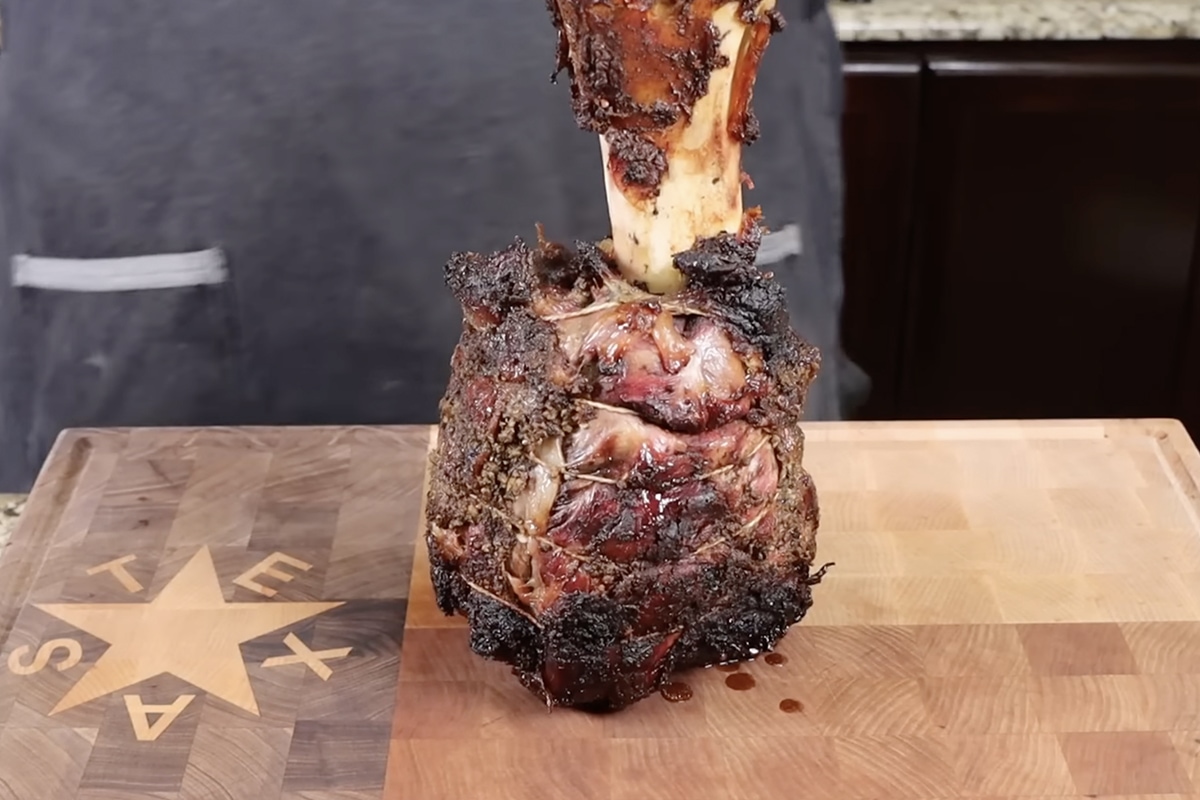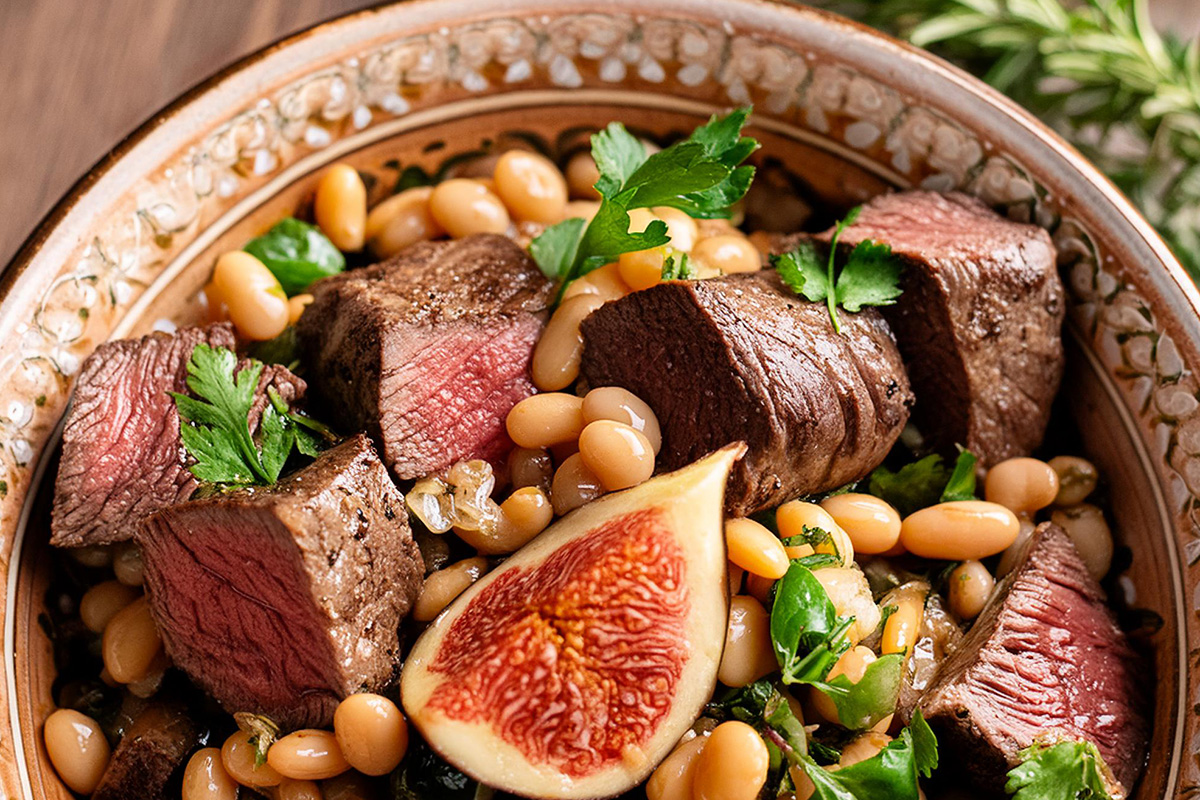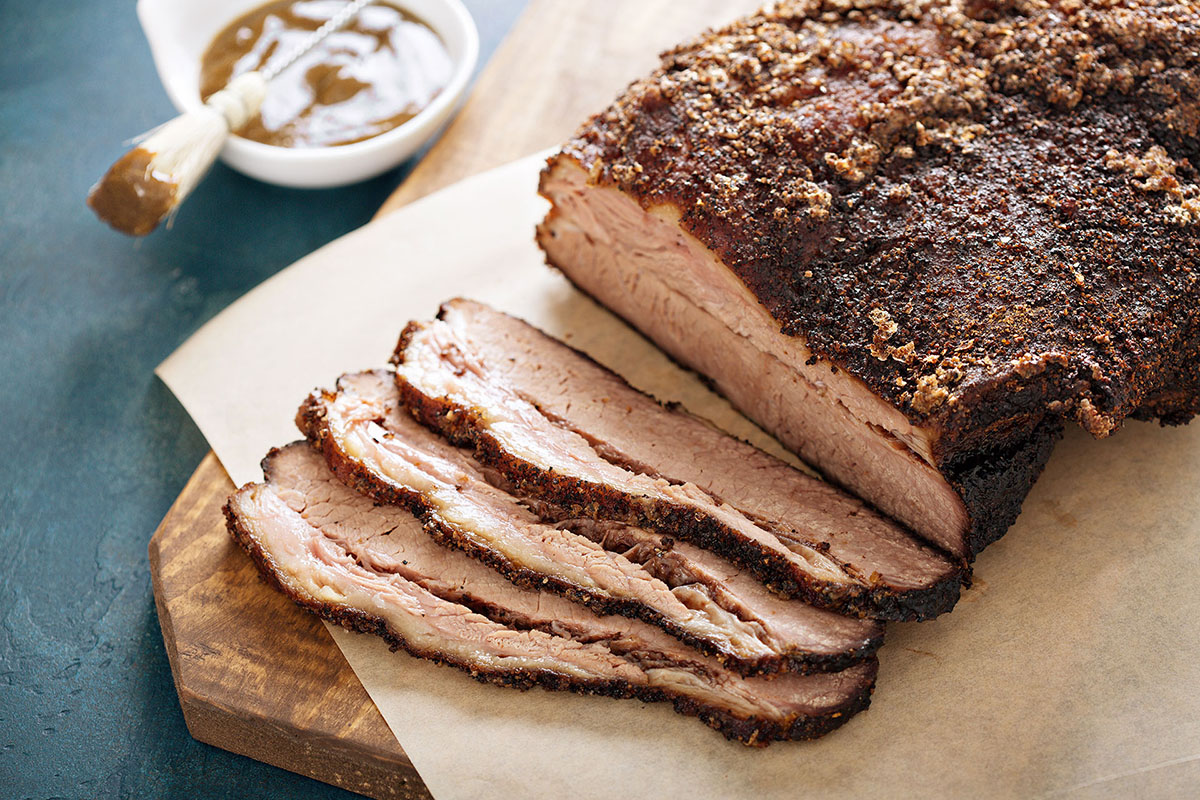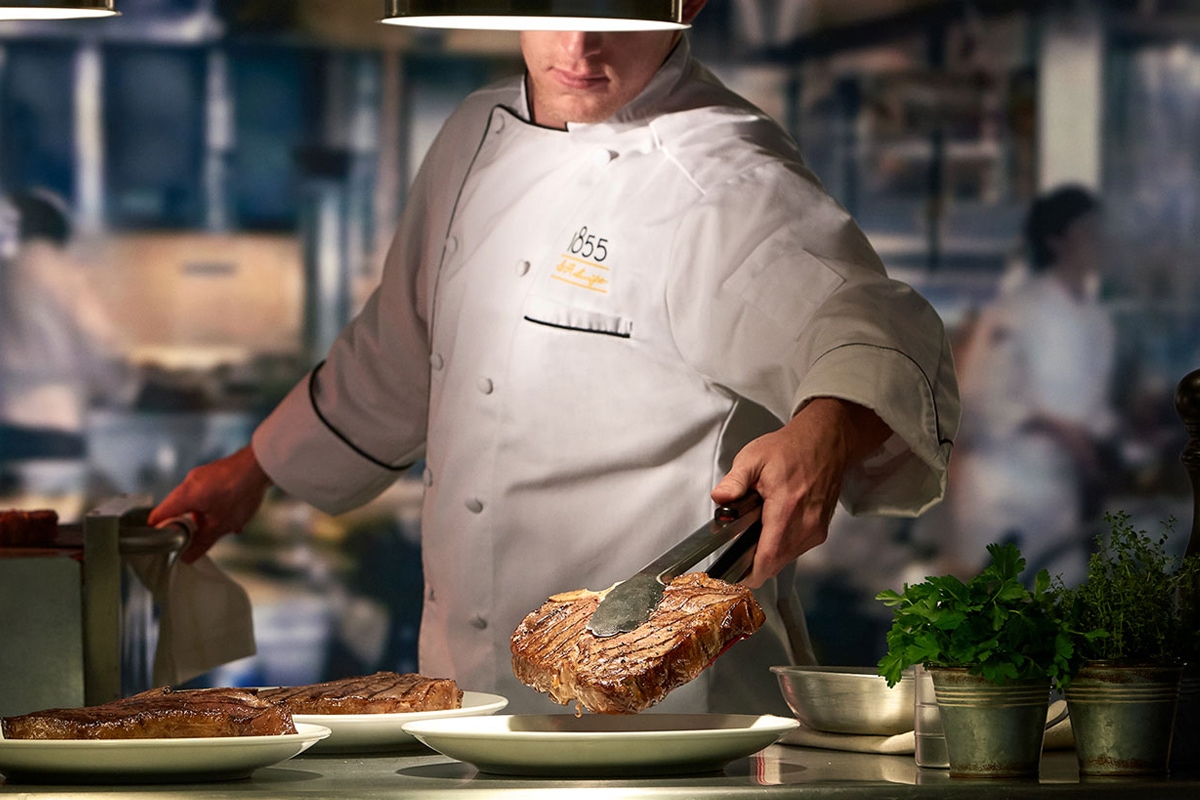
Meet Our Chefs
07.11.2023
There is an elite group of chefs who share a passion for creating unforgettable eating experiences with the consistency and quality of 1855 Black Angus Beef. We’re proud to introduce them here. Explore their stories, collect next-level recipes, and find out why 1855 Black Angus beef is a must-have for their menus.
Jimmy Papadopoulos
Independent Chef
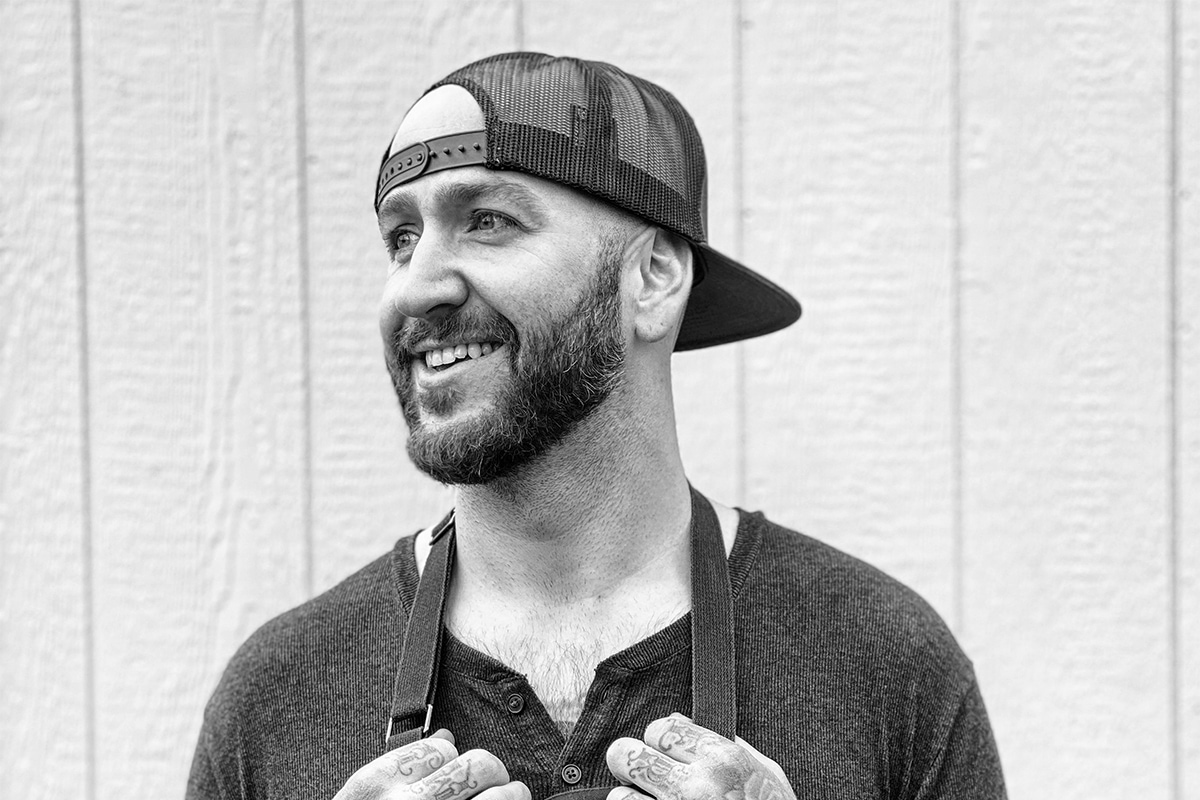
About Chef Jimmy
“My passion for being a chef has always revolved around two driving forces: people and food. A fascination with the art, style, and technique of cooking, coupled with the opportunity to enrich the lives of others through an amazing meal, has been my motivation since the beginning of my career. My work in Chicago has allowed me to earn a variety of acclaim and accolades.” Jimmy made Zagat’s “30 under 30” list, earned a Michelin Bib Gourmand, was named Eater Chicago’s “Chef of the Year,” and was noted as one of “The Best Young Chefs in America” by the Robb Report.
Q&A with Chef Jimmy
When did you decide you wanted to become a chef?
I have always worked in kitchens and around food. My first job was as a dishwasher at a local pizza place when I was 15. By the time I was 18, I knew I wanted to become a chef and enrolled in culinary school.
What is the most popular beef dish you’ve featured on a menu?
In 2014, I was the opening chef of Bohemian House in Chicago. The food was beautiful and soulful, and provided refined riffs on classic eastern European cuisine. One of our most popular dishes was our beef cheek pierogi. We had a team member who spent 40+ hours a week just producing our beef cheek pierogi. They were a huge hit and super delicious.
Besides a traditional steak, what’s your favorite beef cut to prepare?
I love to braise a chuck roast. I also thoroughly enjoy some of the “off” cuts that might not be so popular. Beef tongue is so delicious, as are the cheeks, and I can even truly enjoy a perfectly cooked medium rare slice of beef liver. I have an admiration for cooking a variety of cuts as they are all so unique, and each lends its own character and flavor.
What’s your favorite dish or type of cuisine to cook/eat and why?
I have cooked a variety of cuisines throughout my career, but one of my favorites I will always come back to is grilling beef over live charcoal. There is something that I find so satisfying about building a fire— controlling the heat and perfectly grilling a beautiful steak over it.
What are top tips you’d give novice chefs?
- Don’t be afraid to make mistakes—especially with cooking. Mistakes are some of our best teachers.
- Continue to perpetually use and define your visceral intuition. Cooking is and should always come from the heart. Use your senses; if something looks like it is burning, it probably is.
- Never compromise quality. Your final product will only be as good as the quality of which you started with. Source the best product you can get your hands on.
- It’s just food. Have fun, make mistakes, and share with family and friends. Making others happy through food is, truthfully, what cooking is all about!
What do you enjoy most about being a chef?
Making people happy through the joy that comes along with eating something delicious. The ability to be the conduit for that experience is a very satisfying and selfless feeling.
What is your favorite aspect about 1855 Black Angus Beef?
As a professional chef, quality is king. My food is only as good as the products I work with. The thing that stands out about 1855 Black Angus Beef is the consistency across all cuts. You can tell that there is a rigorous quality program that 1855 lives by just by the fact that each of the different cuts is so consistent in that rich, full flavor that you come to expect from high-quality Black Angus beef. That is the highlight for me. The marbling on all the beef is great, not too much or too little, and the texture of each cut is unique yet comparable to one another from a tenderness standpoint.
Do you have a favorite wine to pair 1855 Black Angus Beef with?
I always thoroughly enjoy a good Bordeaux or Cabernet with just about any grilled steak I have ever had!
How would you define your cooking style?
Rustically refined and soulful.
What’s your favorite ingredient?
Vinegar. There are so many unreal flavor profiles that you can achieve. Although vinegar is never the star of a dish, it accents just about every type of food. It pitches flavor and brings an exciting balance of acidity that just works with so many different types of cuisine.
What would you choose as your last meal?
A fresh loaf of sourdough and some of the best butter on Earth with some good crunchy salt. Also, a giant plate of beef fat French fries with garlic aioli and a whole Dover sole meunière.
Jimmy’s 1855 Black Angus Beef Recipes
Truffle Salt-Crusted Beef Tenderloin
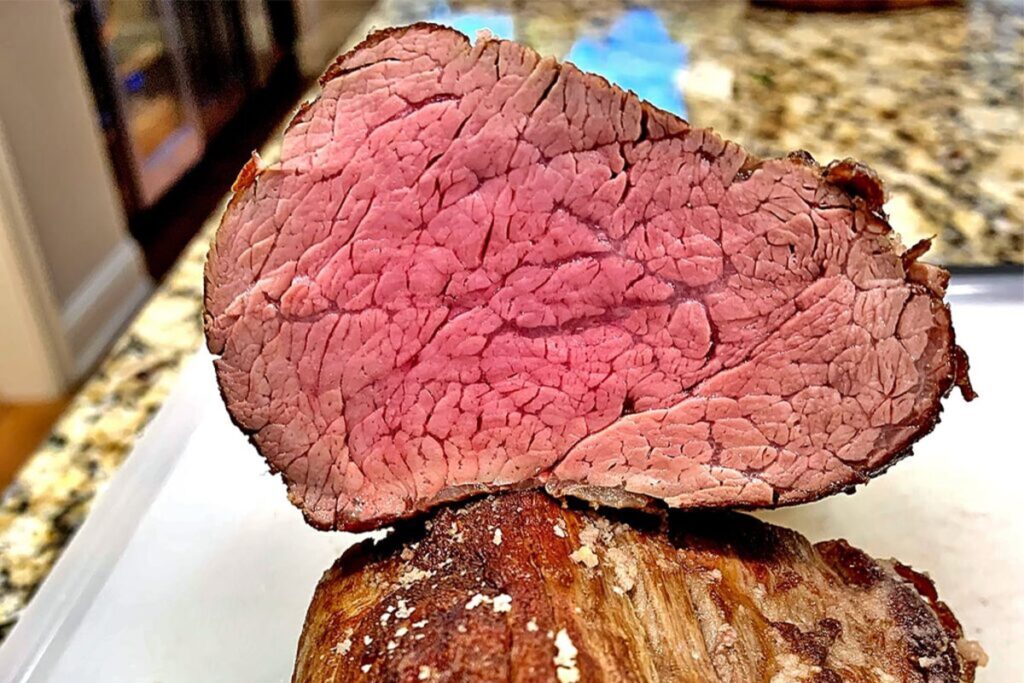
Jimmy uses a salt crust to form another layer of flavor as well as a moisture barrier, making this tenderloin beyond tender and delicious.
Ancho & Coffee Rubbed Tenderloin with Summer Tomatoes and Blue Cheese
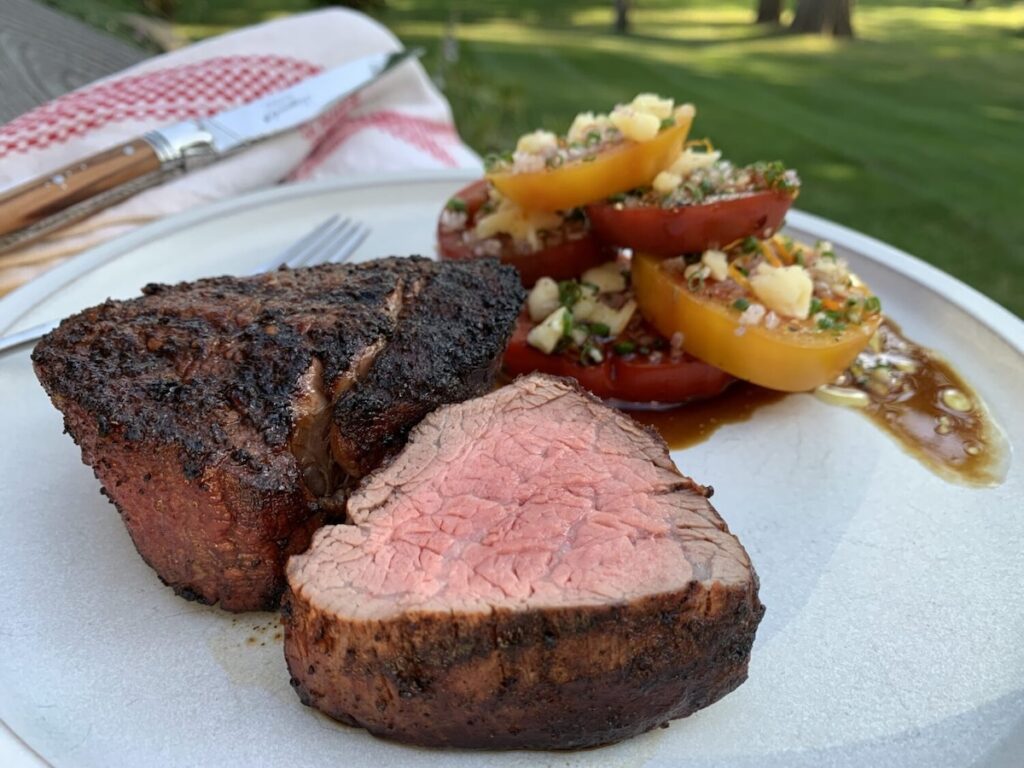
Make the most of peak-season tomatoes (and juicy Black Angus beef that’s always in season) with Jimmy’s bright, smoky tenderloin with tangy blue cheese.
David Moscoso
Executive Chef, Third Wave Café & Wine Bar (New Smyrna Beach, FL)
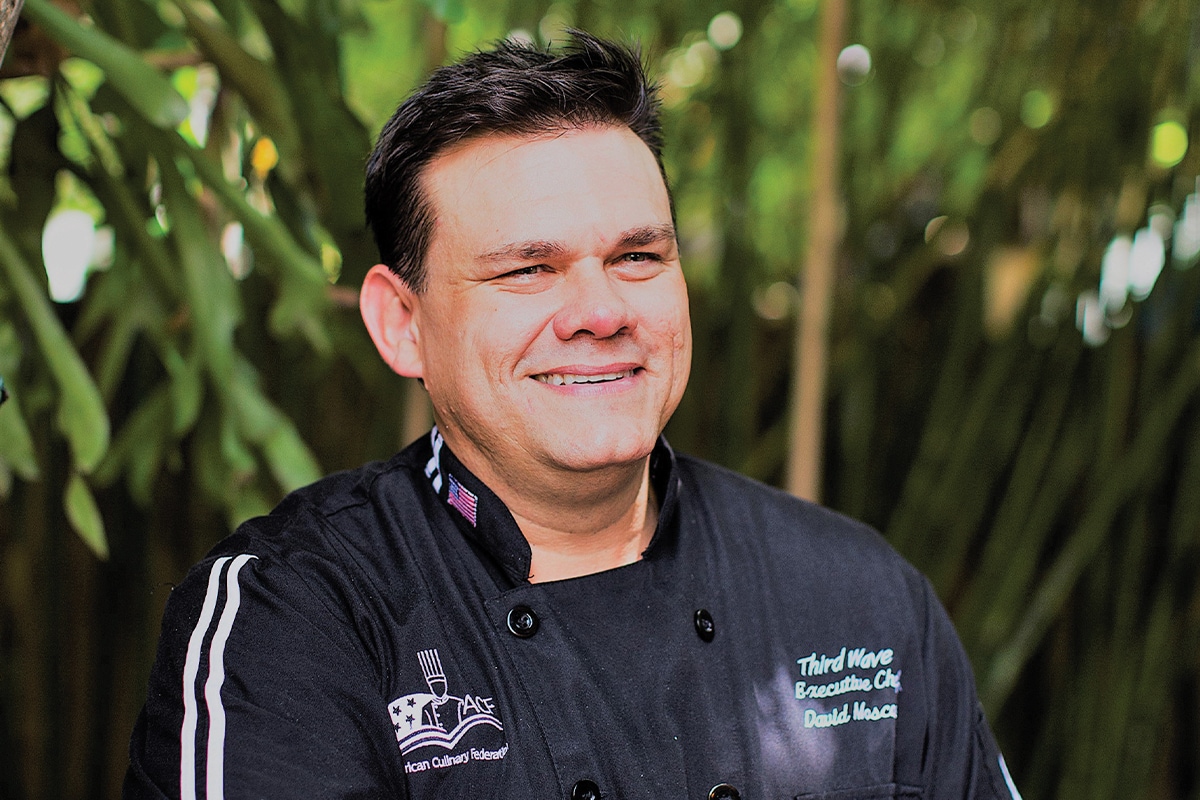
About Chef David
Chef Dave’s passion for cooking was sparked early on by his creative, supportive family. His mother, a Maryland farm girl, passed down her deep respect for the land and love of fresh ingredients—values rooted in generations of farmers. His father, the Ecuadorian-born son of Spanish immigrants, was a talented artist whose vivid use of color also shaped Dave’s approach to the craft.
After attending culinary school near Washington, DC, Dave moved to Port Orange, Florida. There he took his first kitchen job at Down the Hatch Restaurant in Ponce Inlet and was introduced to Florida coastal cuisine. Now, with over 20 years of culinary experience, Chef Dave draws from these powerful influences to create dishes at Third Wave Café & Wine Bar that blend international, coastal, and southern inspiration. He is a member of the American Culinary Federation and a culinary professional of the James Beard Foundation.
Q&A with Chef David
How do your customers respond to having 1855 Black Angus Beef on your menu?
From the very first day I put 1855 on the menu, people reacted enthusiastically. I constantly receive guest compliments. Most notable is the umami richness that lasts long on the palate, the softness of the texture, and the richness of the Angus flavor.
How do you like to prepare the cuts you use?
My favorite way to prepare our meat is in the mouth of the wood-fired oven. We like to cook our steaks at 800 degrees, which gives the steak a beautiful crust.
Besides a traditional steak, what’s your favorite beef cut to prepare?
I can’t choose just one. However, if I had to choose, I would say filet mignon because of the dominance it plays in my restaurant. My next favorite cut would be the top round because of all the robust flavor it gives the beef on weck (roast beef) sandwich.
What’s your favorite dish or type of cuisine to cook/eat and why?
Filet mignon with Florida rock shrimp butter. It crosses a line of two favorites: the savory notes of meat and the sweetness of seafood. Mediterranean-style cuisine is my favorite because of the purity of flavors and ingredients.
What are the top tips you’d give novice chefs?
- It is important to have complete respect for the animal and/or plant that provided its life for you.
- Be sure to be organized with each step you are going to take in the harmony (flow of cooking).
How does the fact that it’s Black Angus affect the eating experience?
I have always favored Black Angus. The attribute is the marbling; the fat is distributed evenly and thinly throughout. By having this, it gives it a consistent flavor and juiciness.
Do you have a favorite wine to pair 1855 Black Angus Beef with?
Chateau Rauzan-Segla 2010 Margaux Second Growth generation.
How would you define your cooking style?
A classic approach combined with a rustic, old-world look.
What’s your favorite ingredient?
Spices. Whether it is salt or pepper or whatever, spices always seem to make food sing—and when you don’t have spice, everything is just a little plain.
Brandon Ellis
Chef/Owner/Operator, Chatter Box Café (Chattanooga, TN)
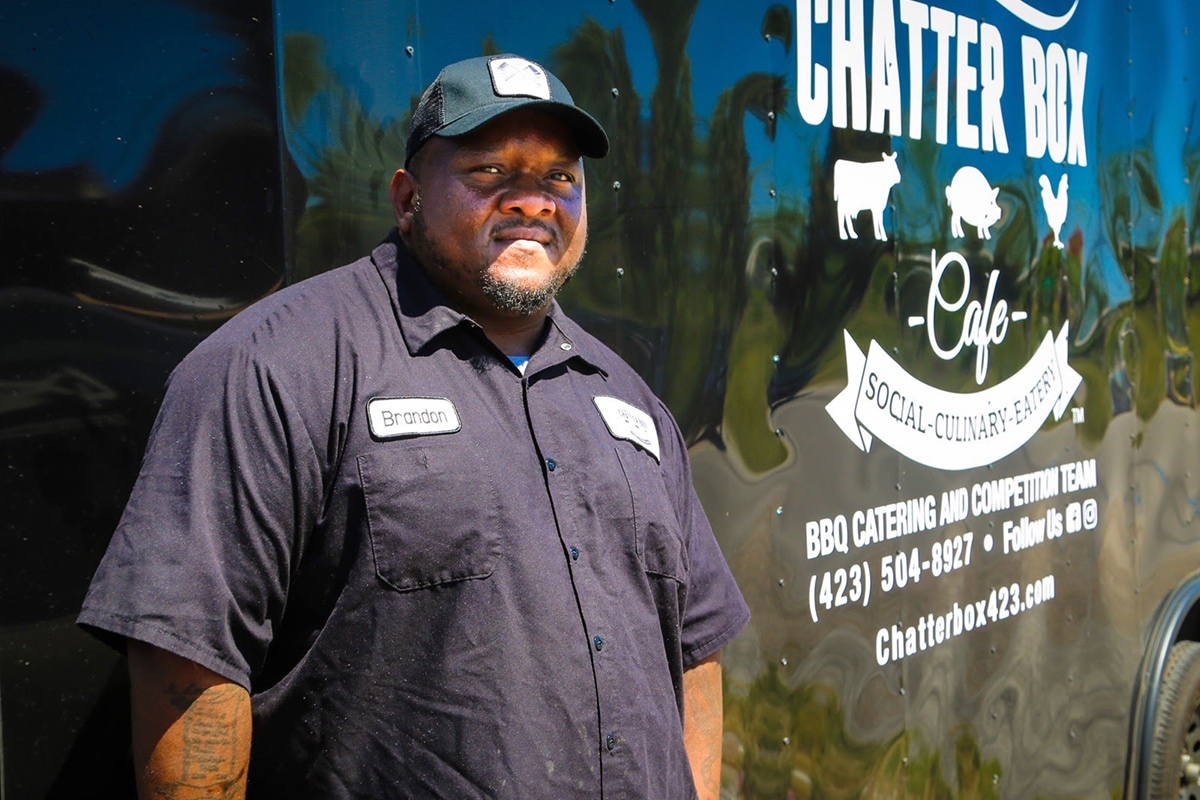
About Chef Brandon
Brandon Ellis was born and raised in Franklin, Kentucky. As a child, his family raised hogs and tobacco. Raised by a single mother who often worked multiple jobs to make ends meet, Brandon is no stranger to hard work. After being arrested, he found himself facing 43 years in prison. In 2006, he was given the opportunity to attend the Teen Challenge Midsouth in Chattanooga, Tennessee, as a second chance. While in the program, he was assigned to work in the kitchen. Although work assignments typically last 30 days, the staff and students fell in love with his cooking, making his first job assignment a permanent position. Working in the kitchen taught Brandon how to cook for large groups and maneuver in a commercial kitchen. Currently, Brandon is the owner and operator of Chatter Box café, specializing in wood-fired BBQ.
Q&A with Chef Brandon
How do your customers respond to having 1855 Black Angus Beef on your menu?
My customers notice the difference in quality and texture that 1855 provides to their eating experience. They also notice the greater amount of meat on the 1855 Black Angus Beef ribs I prepare.
How do you like to prepare the cuts you use?
Right now, I prepare short ribs and burgers because I like to stick to the basics.
What’s your favorite dish or type of cuisine to cook/eat and why?
Korean and Chinese cuisines are my favorite. Fried rice is something I really enjoy, and I’m currently experimenting with kimchi. I like to use different meats with various rice and grains to see what pairs the best. I also like to make my own sushi.
What are top tips you’d give novice chefs?
- You don’t want a dish to sit and get cold before reincorporating it. To make the best dish, you want to learn time management so you can incorporate all the right things at the best times.
- A fluctuation in temperature affects the end dish. Temperature control makes a difference. For example, brisket should be slow and steady while watching the temperature. If the temperature changes too much, it could end with a bad result.
What do you enjoy most about being a chef?
I enjoy being able to create good food. I also really enjoy building relationships with my customers over a meal. Growing up on a farm, a lot of my relationships were built and grown around food. As a family, we ate meals together every day with friends and family. I can remember my uncle smoking pigs and the family having a great time, all because we were enjoying what he cooked. Food played a huge part in my life and relationships.
How does the fact that it’s Black Angus affect the eating experience?
1855 is truly high-end beef for culinary professionals, and any time you start with a quality product, you get a better eating experience. When I compare this beef to others, the texture is better.
Do you have a favorite wine to pair 1855 Black Angus Beef with?
I don’t have a wine, but I do like to pair it with Chattanooga whiskey.
How would you define your cooking style?
Simple. I don’t cook anything I can’t spell. I start with the basics, master those, and then add creativity. I like to use Southern staples and add my own twist. A lot of my inspiration comes from my grandmother.
What’s your favorite ingredient?
Granulated honey because everything can use a little bit of sweetness. It adds a little sweetness to a dish without it being too overpowering. I like to use it with my rubs. A close second is truffle oil because it’s a good binder for rubs and has a unique flavor.
What would you choose as your last meal?
It would be a grilled ribeye because it’s the most tender piece of steak. Add fresh-made crab cakes using king crab. I’d also include mac and cheese with cavatappi pasta and smoked gouda, white American cheese, and mild cheddar. Also, grilled cheese with American and cheddar cheese, plus panko breadcrumbs, with grilled asparagus and French bread on the side.
George Sboukis
Chef/Owner/Operator, Caucus Club (Detroit, MI)
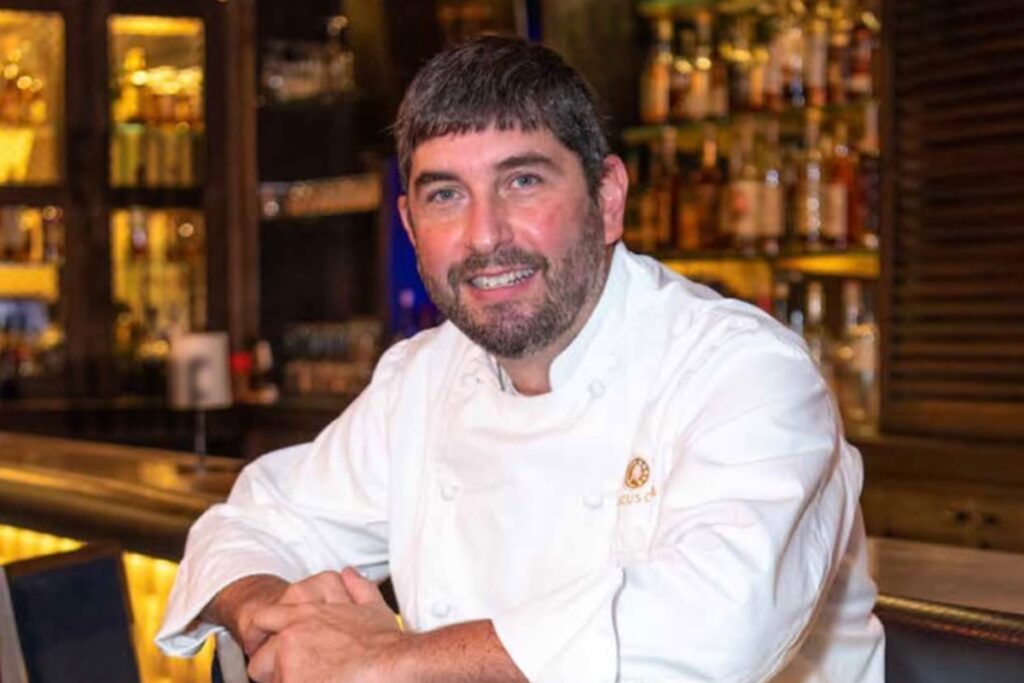
About Chef George
George Sboukis has been a chef/restaurateur since 1996. As a proud father and the son of Greek immigrants, George learned the value of family and hard work early on. George graduated from the University of Michigan with a degree in accounting but found his true passion in creating memorable meals for his patrons and loved ones. In 2017, George reopened the Caucus Club, where he currently serves as chef, owner, and operator.
The Caucus Club is a historic, iconic restaurant that opened in 1952 and is credited with launching the career of Barbra Streisand. They have an on-site dry-aging room featuring a Himalayan salt wall. They butcher all cuts of beef on-site, finishing them on a wood-fired grill.
Q&A with Chef George
How do your customers respond to having 1855 Black Angus Beef on your menu?
Guests appreciate the brand quality associated with 1855 once the servers explain the significance. Our 1855 steaks are prized by our guests for their tenderness and flavor.
How do you like to prepare the cuts you use?
Bone-in cuts are dry-aged and seasoned with olive oil, kosher salt, and coarse black pepper. Then they’re seared on a plancha and finished on a wood-fired grill that’s burning oak and ash.
Besides a traditional steak, what’s your favorite beef cut to prepare?
Skirt steak, which I find to be one of the most flavorful cuts of beef to grill. When done correctly, it has an intense beef flavor that is only matched by a ribeye cap. It has wonderful marbling and large muscle fibers that make the steak very bold.
What’s your favorite dish or type of cuisine to cook/eat and why?
I love Greek and Italian cuisine, and my favorite dishes are typically braised, such as beef short ribs or veal osso buco. I love the rich development of flavor that comes with braising meats with wine and herbs.
What are top tips you’d give novice chefs?
- You don’t need a lot of equipment, but what you use should be of good quality.
- Take your time with dishes. Be patient. If you fail the first time, don’t get frustrated—just learn from your experience and try again!
What do you enjoy most about being a chef?
I love the process; I love the transformation that takes place when creating a dish. I also love meeting farmers because they are the people responsible for cultivating our foods.
How does the fact that it’s Black Angus affect the eating experience?
The flavor and consistency of Black Angus beef are critical to our reputation. We dry age our cuts for up to 30 days, and the marbling of Angus beef is critical to that process. Dry aging does to beef what the sun does to grapes before they are crushed to make Amarone; it concentrates the flavor, adds intensity, and tenderizes the steaks as well. Our process typically goes for around 30 days for most cuts, which is enough time to tenderize the beef but not so long as to excessively dehydrate the cuts.
How does 1855 Black Angus Beef compare to other premium (Upper 2/3 Choice & Prime) programs?
For myself, I appreciate the yield that comes with 1855 cuts. The short loins yield amazing porterhouse and T-bone cuts. The exports consistently yield Chicago cut ribeyes without excessive waste. The tenderloins are also very nicely trimmed and large, giving me great control over various cuts.
Do you have a favorite wine to pair 1855 Black Angus Beef with?
My favorite would have to be 2012 Eisele Vineyard Altagracia Cabernet Sauvignon, a value wine from one of the best producers in Napa. Made in the tradition of great European Cabernet blends, it’s very balanced, complex, and ready to drink. This wine stands up to the bold flavor of steak without overpowering it. Velvety tannins complement the juicy, well-marbled steaks and leave the palate wanting another bite.
How would you define your cooking style?
I was taught to butcher and cook by my parents, who were both immigrants from Greece. Because of that, I would say my style is very humble and authentic.
What’s your favorite ingredient?
The onion! Whether it’s a shallot, Cipollini, Vidalia, Spanish, or green, the onion is the foundation of any great savory dish.
What would you choose as your last meal?
I’ve become more sentimental as I’ve gotten older. I lost my dad years ago, and my mother is 80. Honestly, anything my mom would make for me would be a perfect last meal. She’s an outstanding cook. I love her braised dishes; her preparation of vegetables and greens is magical. Her desserts are incredible. I’d just want my mom’s cooking.
Sarah Faherty
Entrepreneur, MasterChef Contestant, TV Personality
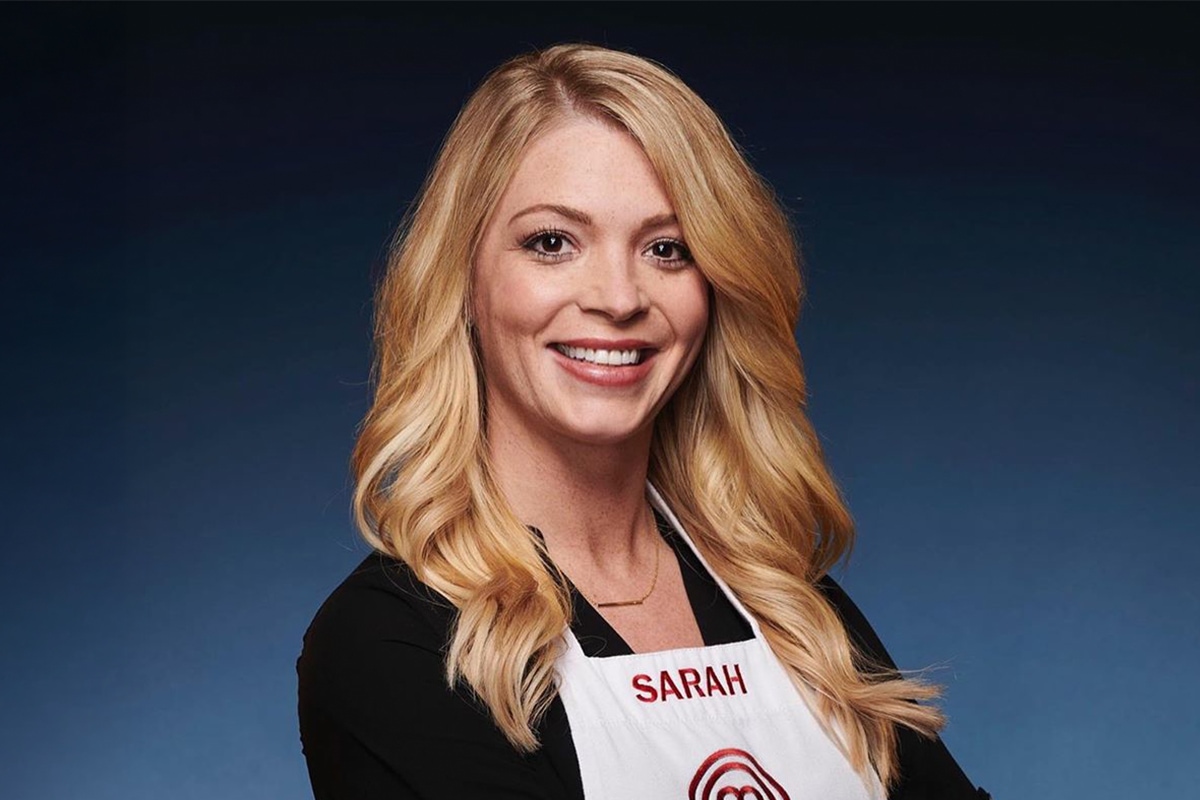
About Chef Sarah
You might remember Sarah as a runner-up on the hit show “MasterChef.” When she’s not cooking up ratings on TV, this Austin, Texas native is dreaming up remarkable beef dishes with international influences. Sarah says that her passion for food started when she was working with the U.S. Army. During that time, cooking helped her feel connected to home.
Sarah’s Beef Recipes
- Black-Eyed Pea Chili
- Prime Rib with Rosemary Au Jus
- Blue Cheese Stuffed Burger
- Beef Bourguignon
- Braised Short Ribs
- Herb-Rubbed Oven Roast
- Pot Roast
- Ground Beef Tacos with Spicy Lime Zest Crema
- Beef Stroganoff
- Garlic Butter Grilled New York Strip with Zesty Shrimp Scampi
- Porterhouse with Marrow Butter and Horseradish Cheesy Scalloped Potatoes
- Perfect Grilled Ribeye with Balsamic Glazed Mushrooms
- Texas-Style Smoked Brisket
- Easy, Fall-off-the-Bone BBQ Ribs
- Santa Maria Tri-Tip with Fresh Roasted Garlic
More Chef-Created Recipes
Tim Flores
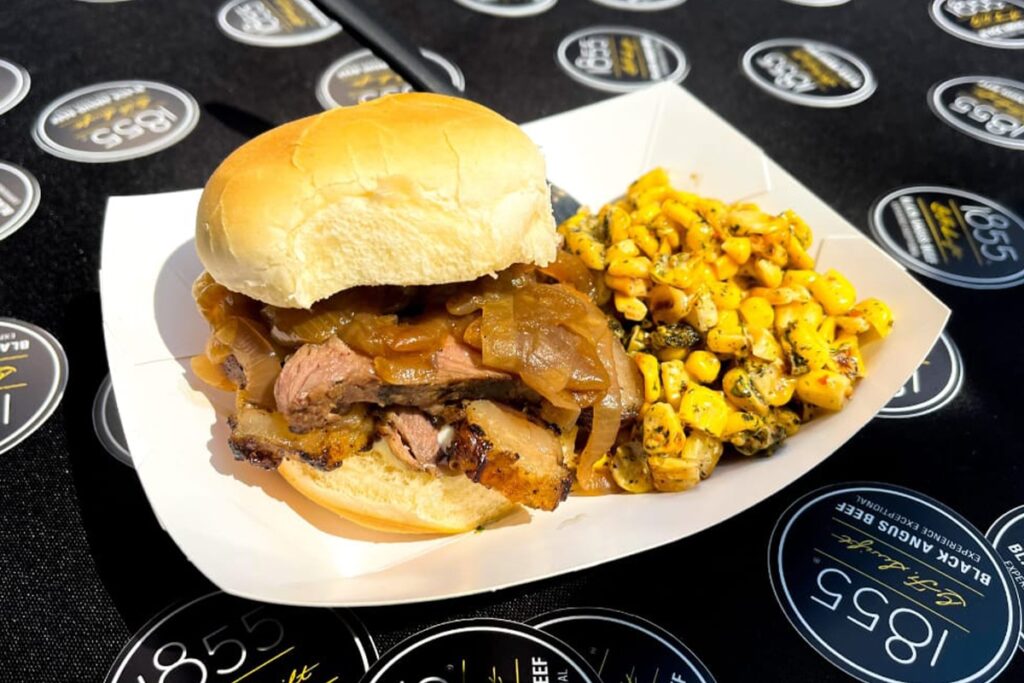
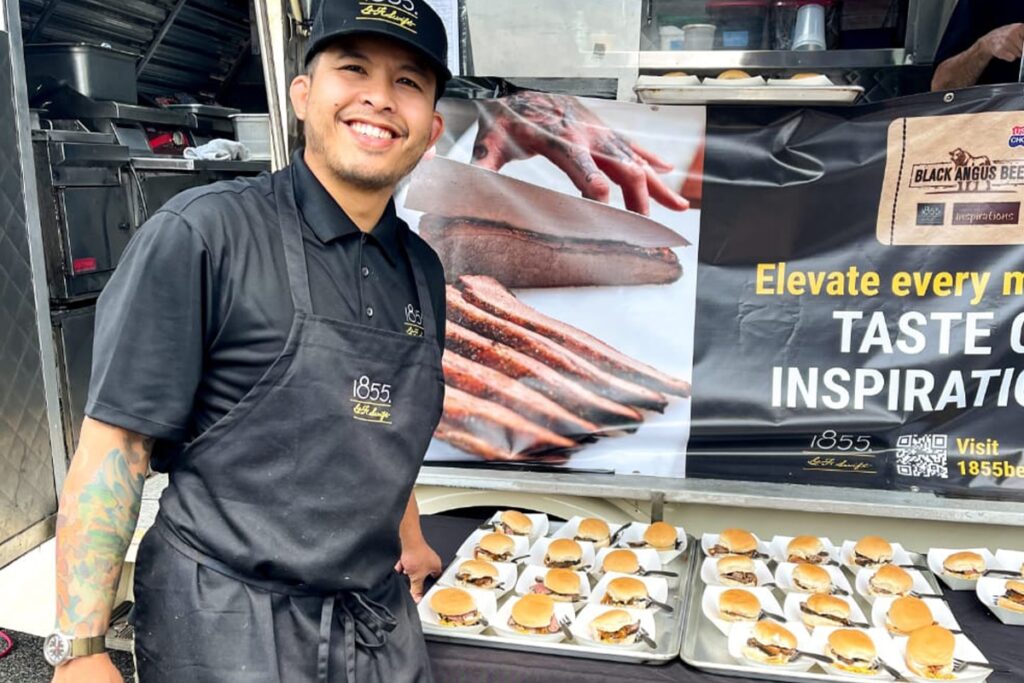
Chef Tim Flores of Kasama builds his Bistek sliders on grilled 1855 Black Angus Beef top sirloin layered with soy-braised onions and a punchy citrus aioli. It’s a bold, Filipino-inspired approach that delivers richness, balance, and a serious flavor story in a handheld format.
Sean Leone
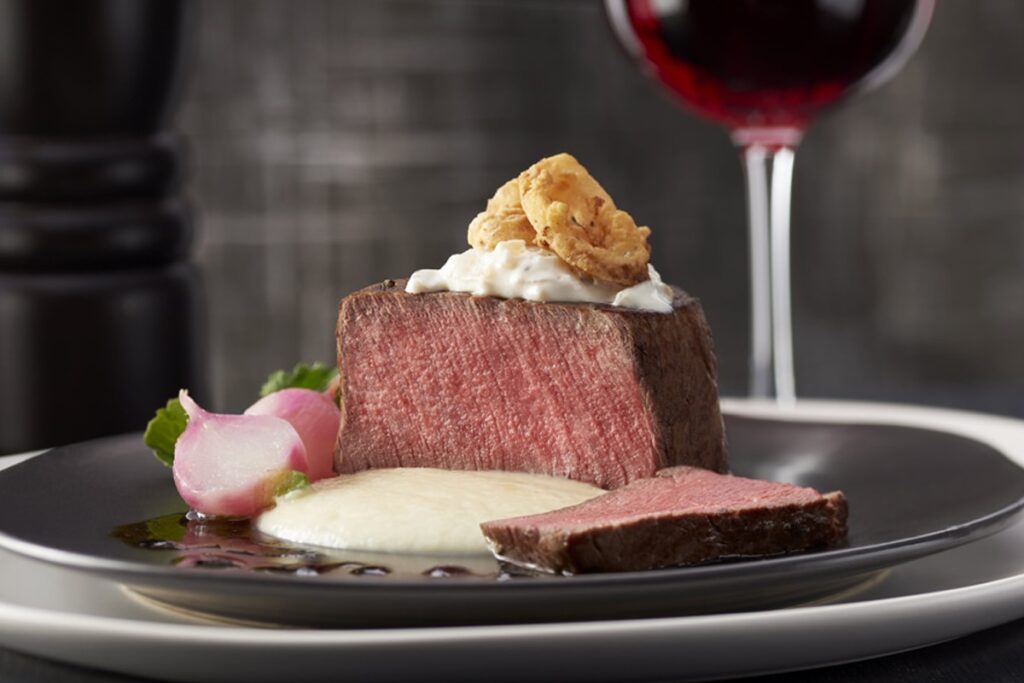
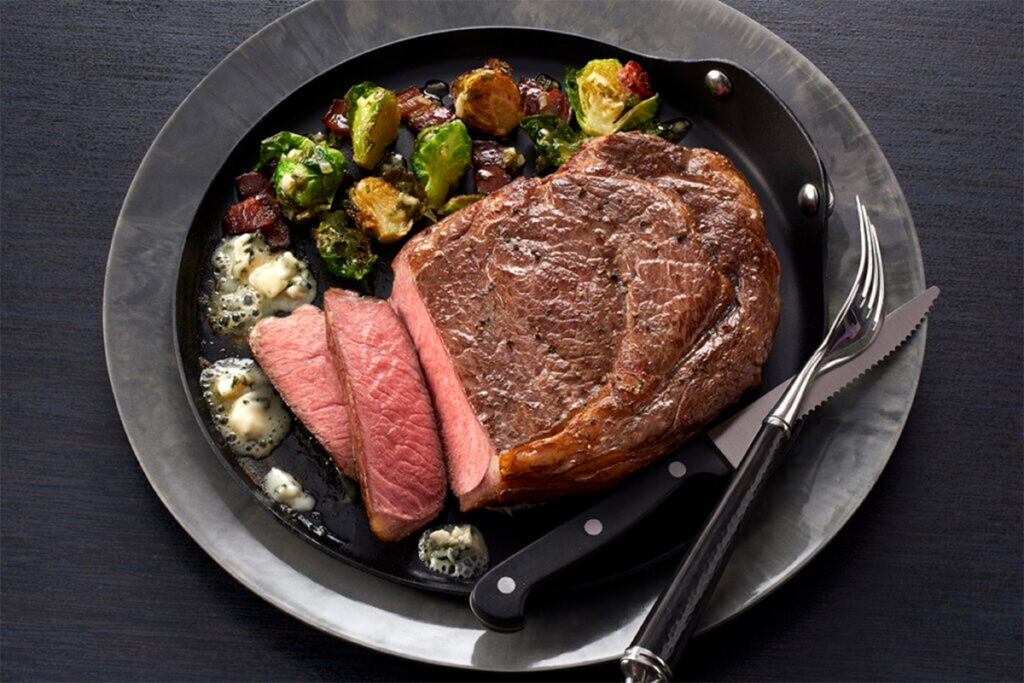
Chef Sean Leone is a private executive chef who partnered with us to craft these elevated recipes that use thoughtful ingredients like broken mustard vinaigrette, burnt onion oil, and, of course, cuts of marbled Black Angus beef.
- Smoked Almond-Crusted Tri-Tip over Roasted Cauliflower Salad with Golden Raisins and Broken Mustard Vinaigrette
- Togarashi-Rubbed Skirt Steak, Carrot Puree, and Sticky Sesame Soy & Cilantro Herb Salad
- Pecan and Chipotle-Rubbed Beef Sirloin Flap with Pickled Carrots, Tortillas, and Mexican Street Corn
- Garlic-Rubbed Braised Top Round with Arugula, Brie Cheese, Pear, and Tomato on Italian Bread
- Filet Mignon with Creamed Parsnip, Glazed Radish, Horseradish-Caramelized Onion Cream, and Burnt Onion Oil
- Boneless Ribeye with Fried Brussels Sprouts
Become a Featured Chef
Help us tell the story of 1855 Black Angus Beef and help other chefs serve premium beef that impresses customers. To be selected as the next featured chef, there are a few requirements that must be met.
- Have 1855 Black Angus Beef-branded menu offerings at your restaurant
- Be highly connected to your social media network with genuine engagement
- Minimum of 1,000 followers and a 5% engagement rate
- Be willing to share a cooking tip or recipe on your social pages as well as our website
What Does it Mean to be a Featured Chef?
As a Featured Chef, you’ll be spotlighted on the 1855 Black Angus Beef website and social channels—amplifying your name, your restaurant, and your reputation. You’ll also be treated to a special 1855 Black Angus Beef swag pack, carefully curated for kitchen pros.
